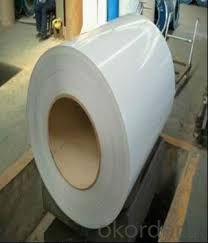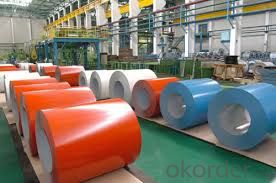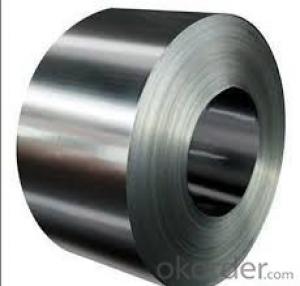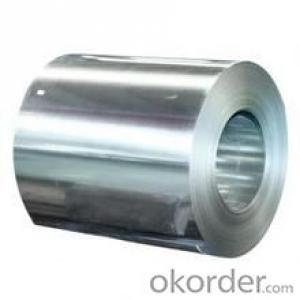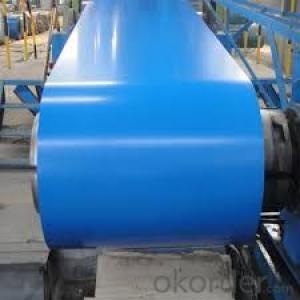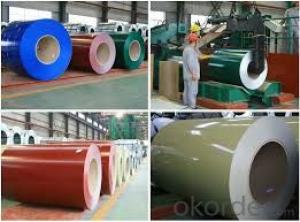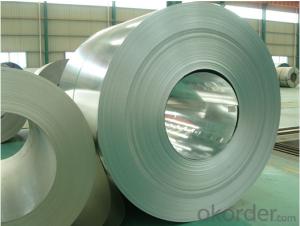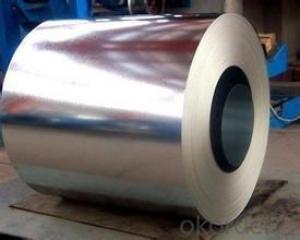Manufacturing Prepainted Galvanized Steel with Zinc Coated/Cold Steel Rolled
- Loading Port:
- Shanghai
- Payment Terms:
- TT OR LC
- Min Order Qty:
- 20 m.t.
- Supply Capability:
- 10000 m.t./month
OKorder Service Pledge
OKorder Financial Service
You Might Also Like
Product Description
Color Coated Galvanzied Steel
1, Grade: SGCC, PPGI CGCC, SGLCC
2, Width: 800-1250mm
3, Thickness: 0.3-1.0mm
4, Color: ALL RAL
* Base Material: Al-Zn Galvanized Steel Coil. SGLCC
* Top side: 15-25 microns primer microns polyester.
* Back side: 5-8 microns primer epoxy.
* Width: 800-1, 250mm
* Thickness: 0.3 -1.0mm Thickness tolerance: +/- 0.02mm
* Al-Zn coating: 30-150g /sq. M. Or can be provided as clients' requirements
* Color: All RAL colour is available or customer supplying the sample
* Inner diameter of coil: 508mm&610mm.
* Packing: Standard seaworthy packing or according to user's need.
* Weight of each coil: 9 tons max
* Guarantee/ warranty

Usage
1. Used as roof panel, wall panel in steel structure in warehouse, factories, exibition hall container houses, cold storage,
2. It is also mainly used in light industry, automobile, construction, animal husbandry, fishery and commerce, etc.
Packing
1. Metal band strapping
2. Outside diameter ring
3. Label
4. Protective steel sheet
5. Water and rustproof paper
6. Steel sheet
Q&A Do you accept OA payment terms?
ANSWER: Yes, sure, but it normally depending on the order value
- Q: Can steel coils be coated with anti-fingerprint materials?
- Yes, steel coils can be coated with anti-fingerprint materials. These coatings are designed to minimize fingerprint smudging and make the surface easier to clean, improving the appearance and functionality of the steel coils.
- Q: How are steel coils used in the production of medical equipment?
- Steel coils are used in the production of medical equipment in a variety of ways. One common use is in the manufacturing of surgical instruments. Many surgical instruments, such as scalpels, forceps, and clamps, require a sharp and durable cutting edge. Steel coils are used to create these cutting edges, as they can be easily shaped, hardened, and sharpened to ensure precision and longevity. Additionally, steel coils are often used in the production of medical devices such as braces, orthopedic implants, and prosthetics. These devices require materials with high strength and durability to support and stabilize the body. Steel coils can be formed into different shapes and sizes to meet the specific needs of patients, providing the necessary support and functionality. Furthermore, steel coils are used in the production of medical equipment such as MRI machines and X-ray systems. These machines require strong and reliable components to ensure accurate imaging and diagnostics. Steel coils are used in the construction of these machines to provide stability and structural support, allowing for precise and high-quality imaging. In summary, steel coils play a crucial role in the production of medical equipment by providing strength, durability, and versatility. From surgical instruments to orthopedic devices and diagnostic machines, steel coils are utilized to create reliable and high-performing medical equipment that ultimately improves patient care and outcomes.
- Q: How are steel coils handled during transportation to prevent damage?
- Steel coils are typically handled with extreme care during transportation to prevent damage. They are secured tightly using steel strapping or bands to prevent any movement or shifting during transit. Additionally, protective packaging materials, such as wooden or steel crates, are often used to provide extra cushioning and stability. Specialized equipment, such as forklifts or cranes, are used to lift and load the coils onto trucks or containers, ensuring safe and secure transportation.
- Q: I have lung cancer. My doctor told me to invest in stainless steel pots to cook with, instead of magnalite. What's the difference between the all stainless steel pots and the Hard-Anodized pots? and are there any stainless steel pots that are nonstick?
- The difference in stainless steel cookware is the amount of different metals used when making them. 18-10 is the best combination. I have Tramontina SS pots and pans and love them. Nice heavy bottoms that evenly heat. Getting used to cooking with stainless is a bit difficult. You need to start with high heat and then turn it down when you add ingredients. This assists in food not sticking.
- Q: How are steel coils used in the production of steel pipes?
- Steel coils are used in the production of steel pipes by being unwound and fed through a series of rollers that shape and weld the steel into a seamless or welded pipe.
- Q: hi, i have a steel block with an unussual composition. does anyone know if this is any particular type?c- .6%, si - .33%, mn - .6%, sulphur - .014%, phosphorous - .013%, ni - 1.69%, Cr, 1.07%, molybdenum - .67%
- You have opened a can of worms. Specific types of steel vary not only by composition but by the way they were made, their physical properties and their morphology (microscopic structure). The composition you have given would fit for High Carbon Steel and Medium Carbon Steel. Go to the reference I've given, it allows you to put in 3 of the components of your alloy and then it gives you a list of possibilities. You can open each candidate individually and see the full composition. Hours of fun. :)
- Q: I was wondering whether anyone knew if painted steels rusts at the same speed as steel that isn't painted. Also, does steel rust quicker than aluminium?Thank you
- Painting a piece of steel will coat it with a protective layer, causing it to not rust (not get oxidised). Aluminum does not rust.
- Q: What are the different methods of slitting edge trimming for steel coils?
- Steel coils can be slit using various methods, each with its own benefits and applications. 1. Rotary Shear Slitting: This approach utilizes rotary knives mounted on a rotating shaft to cut through the steel coil. The knives create a shearing action as they pass through the coil. Rotary shear slitting is versatile, accommodating various coil thicknesses and materials. It is commonly employed for high-volume production, offering clean and precise cuts. 2. Crush Cut Slitting: This method involves pressing the steel coil against a hardened anvil with a rotating knife. The coil is cut by crushing it against the anvil. Crush cut slitting is suitable for thinner gauge materials and those sensitive to shearing forces. It provides clean cuts but may have limitations in terms of coil thickness and width. 3. Razor Slitting: Razor slitting employs a razor blade mounted on a rotating shaft to slice through the steel coil. This method is commonly used for thin and delicate materials that require precise and burr-free edges. While it provides clean cuts, it may be limited in terms of coil thickness and width. 4. Shear Slitting: This approach utilizes a pair of opposing blades to shear through the steel coil. The blades move past each other, creating a scissor-like cutting action. Shear slitting is commonly used for heavier gauge materials, offering clean and precise cuts. It is suitable for high-speed production and can handle a wide range of coil thicknesses and materials. 5. Laser Slitting: Laser slitting employs a high-powered laser beam guided by computer-controlled optics to cut through the steel coil. It offers precise and clean cuts and is suitable for various coil thicknesses and materials, including high-strength steels. Laser slitting provides a high level of accuracy and can handle complex cutting patterns. Each method has its own advantages and considerations, depending on the specific requirements of the steel coil slitting operation. Factors such as coil thickness, material type, desired edge quality, and production volume will influence the choice of slitting method.
- Q: I wrote in my assignment that mild steel has a high carbon content (4%).This is why it has its strong and rigid properties.. is this correct?
- yes it does
- Q: How are steel coils used in the manufacturing of bridges?
- Steel coils are used in the manufacturing of bridges as they provide the raw material for creating structural components such as beams, girders, and columns. These coils are processed and shaped into the required sections, which are then assembled and welded together to form the bridge's framework. The strength and durability of steel make it an ideal material for constructing bridges that can withstand heavy loads and harsh environmental conditions.
Send your message to us
Manufacturing Prepainted Galvanized Steel with Zinc Coated/Cold Steel Rolled
- Loading Port:
- Shanghai
- Payment Terms:
- TT OR LC
- Min Order Qty:
- 20 m.t.
- Supply Capability:
- 10000 m.t./month
OKorder Service Pledge
OKorder Financial Service
Similar products
Hot products
Hot Searches
Related keywords



